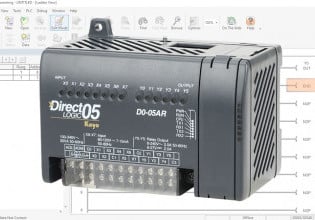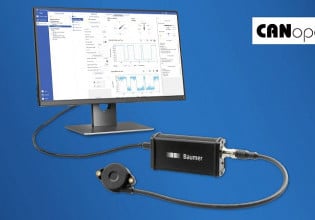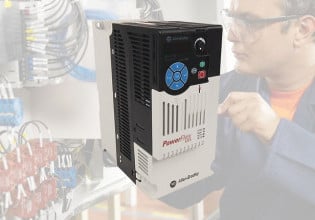Hello to everyone, new member here... 
I've built a CNC machine where I control the VFD using modbus from UCCNC software, using Waveshare Industrial Isolated converter (USB to RS485).
Hardware:
VFD to motor connected with shielded cable for spindles, length 4m, grounded at both sides
RS485 converter connected with shielded cable to the VFD, terminated with 120ohm resistors on both sides, connection length about 30cm (putting it further doesnt change anything). Grounded at GND terminal at VFD.
Following problem:
1) I get random "pauses" in transmission signal - so for few seconds I see constant data flow, then it has hiccup for like 1-2seconds and goes further again for few seconds and it repeats. Depending on speed and modbus delay it changes a bit (those pauses are more or less frequent) but I cannot really get it to run "constantly", this sometimes delays also my controlling signals to the VFD obviously. Those pauses are more frequent when VFD runs, but not dramatically worse.
2) I decided to measure the RS485 signal with an oscilloscope (in1 +, in2 -, ground connected to ground terminal) and here is what I got. Uneven voltage levels is problem nr 1. The second thing is, that as soon as the VFD starts those "stable" signals jump all over the screen suddenly and it is hard to get stable reading. I also see reflection of the signal after around 2-3ms if I measure correctly.
I will be grateful for ideas - where could I look for answers,what could be the problem, why the voltage levels on A+ and B- line are different. Picture is in the STOP mode (spindle not running).
I've built a CNC machine where I control the VFD using modbus from UCCNC software, using Waveshare Industrial Isolated converter (USB to RS485).
Hardware:
VFD to motor connected with shielded cable for spindles, length 4m, grounded at both sides
RS485 converter connected with shielded cable to the VFD, terminated with 120ohm resistors on both sides, connection length about 30cm (putting it further doesnt change anything). Grounded at GND terminal at VFD.
Following problem:
1) I get random "pauses" in transmission signal - so for few seconds I see constant data flow, then it has hiccup for like 1-2seconds and goes further again for few seconds and it repeats. Depending on speed and modbus delay it changes a bit (those pauses are more or less frequent) but I cannot really get it to run "constantly", this sometimes delays also my controlling signals to the VFD obviously. Those pauses are more frequent when VFD runs, but not dramatically worse.
2) I decided to measure the RS485 signal with an oscilloscope (in1 +, in2 -, ground connected to ground terminal) and here is what I got. Uneven voltage levels is problem nr 1. The second thing is, that as soon as the VFD starts those "stable" signals jump all over the screen suddenly and it is hard to get stable reading. I also see reflection of the signal after around 2-3ms if I measure correctly.
I will be grateful for ideas - where could I look for answers,what could be the problem, why the voltage levels on A+ and B- line are different. Picture is in the STOP mode (spindle not running).
Attachments
-
1.5 MB Views: 9









